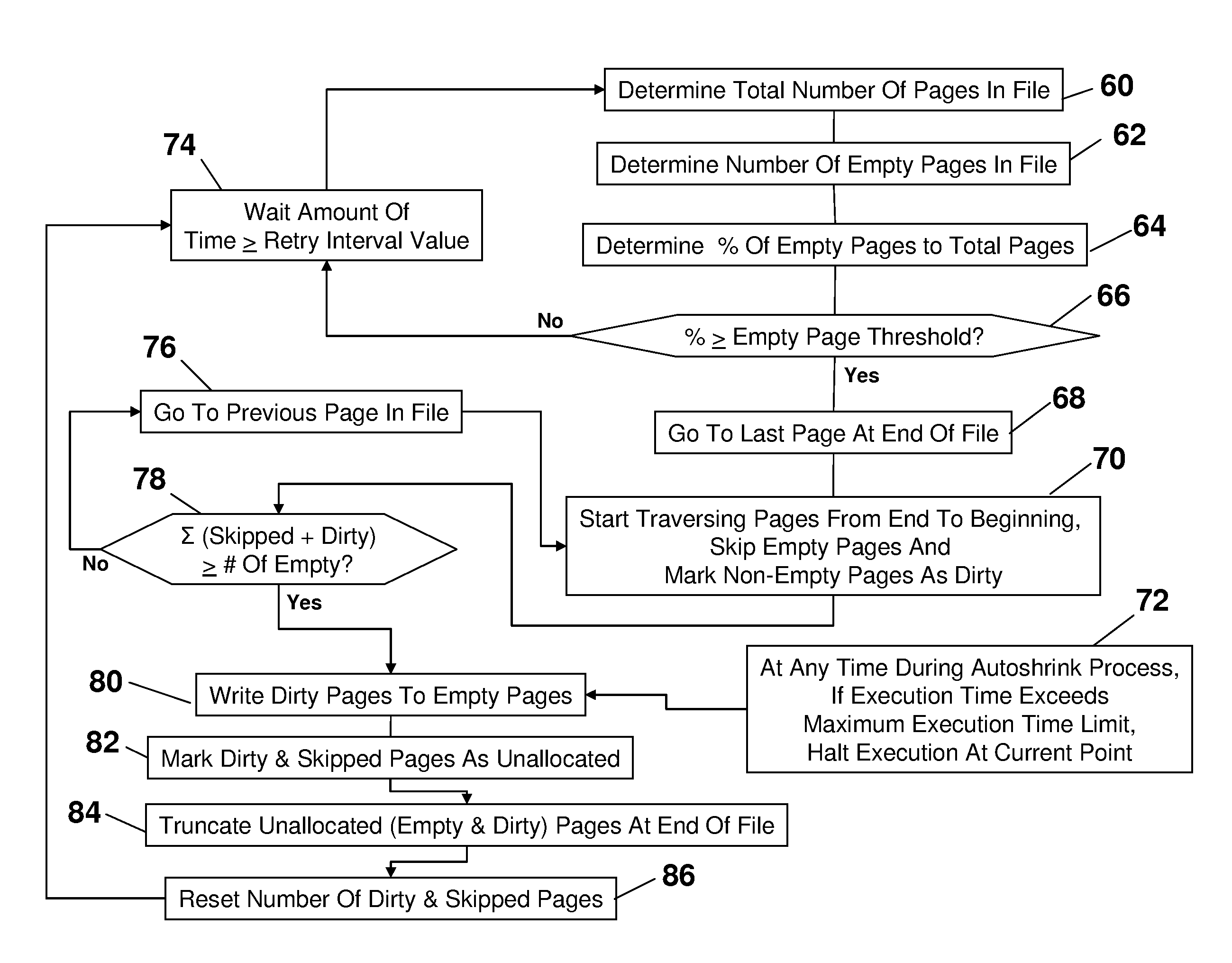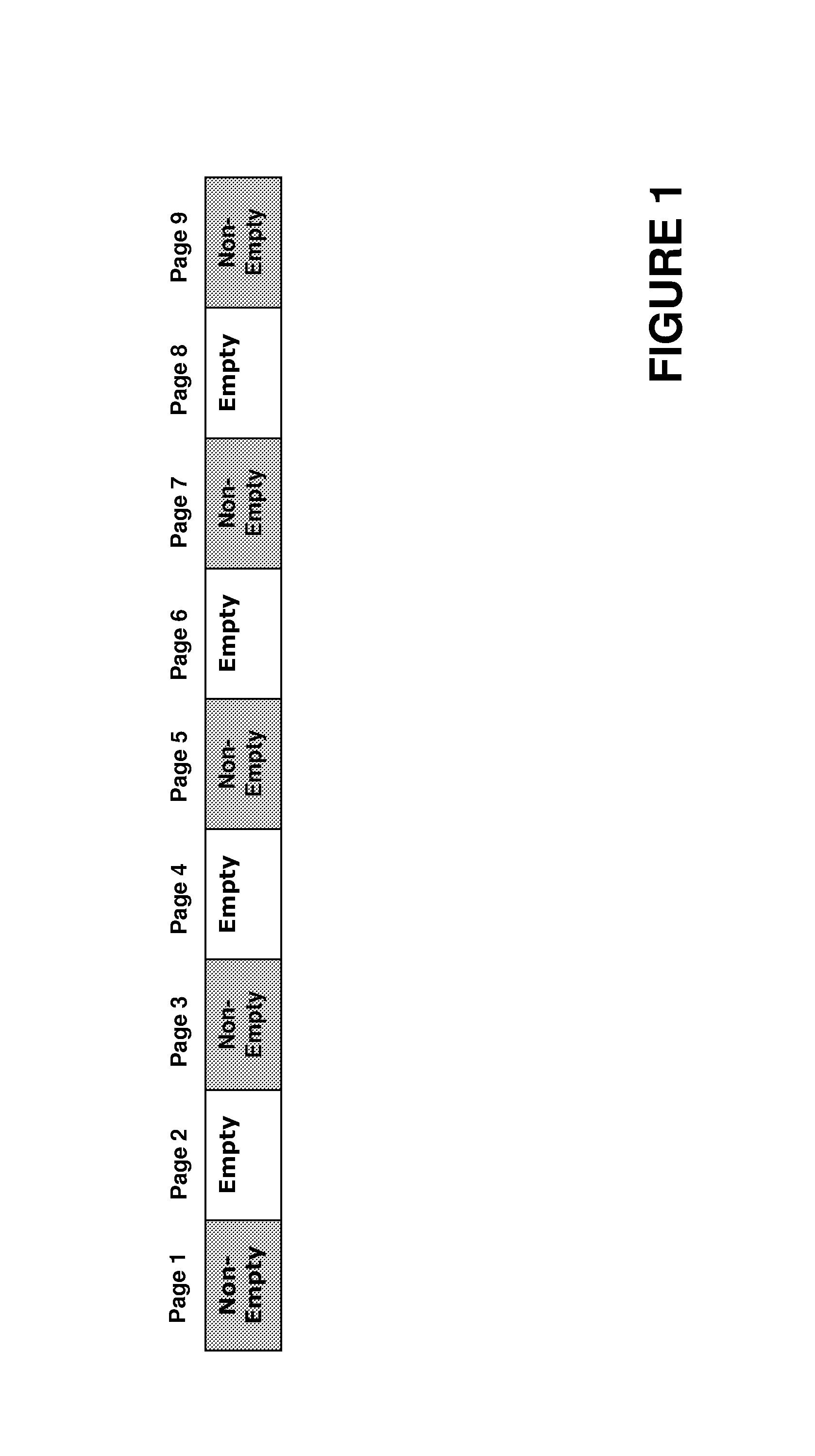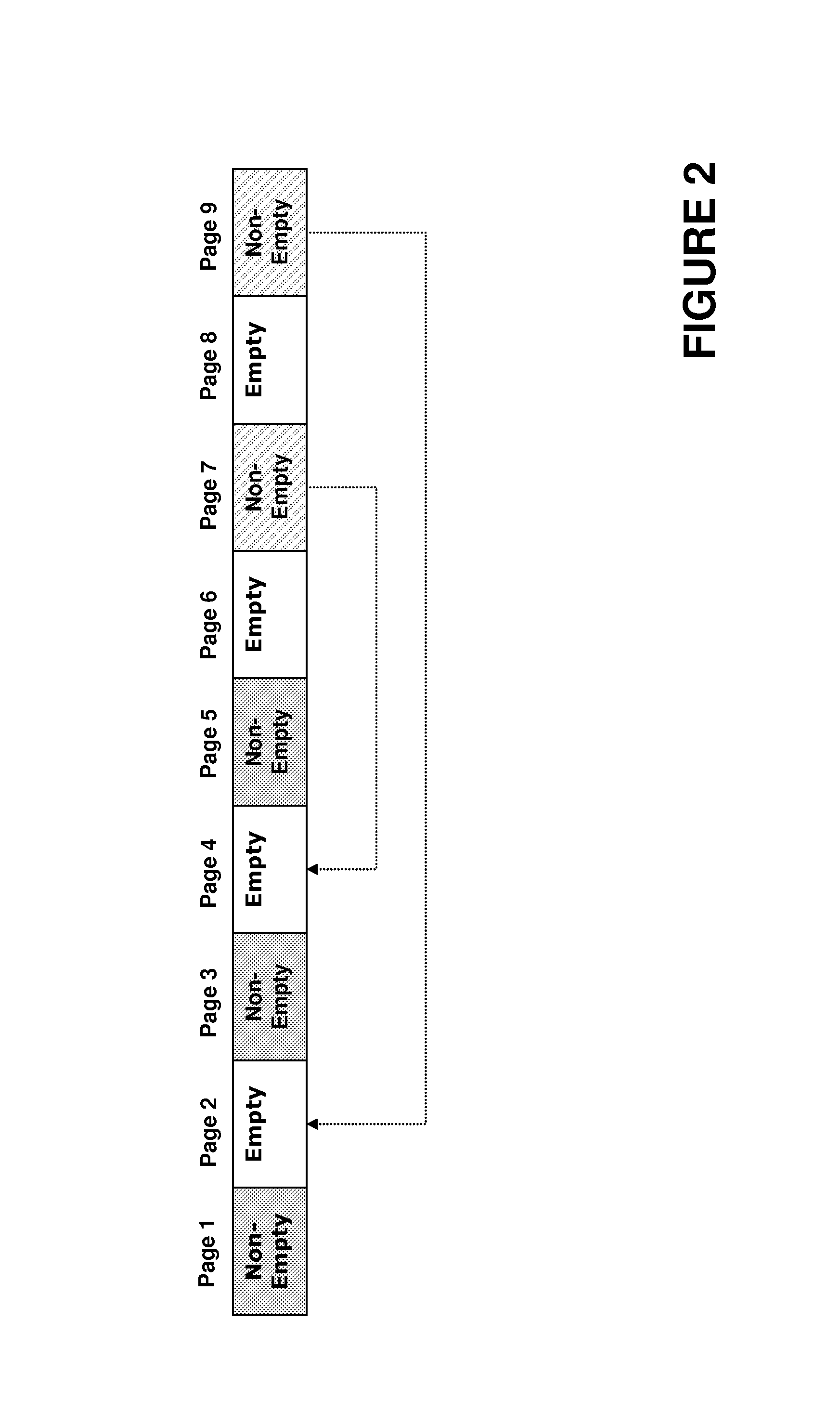Memory file size adjustment
a technology of memory file and file size, applied in the field of database file automatic resizing, can solve the problems of difficult to remove the database file easily, troublesome free memory of the database, out of service, etc., and achieve the effect of reducing the size of the database, increasing file system space, and little processor time and memory
- Summary
- Abstract
- Description
- Claims
- Application Information
AI Technical Summary
Benefits of technology
Problems solved by technology
Method used
Image
Examples
Embodiment Construction
[0017]Database autoshrink in accordance with the present invention provides the capability to automatically adjust the size of a database file. Generally, the autoshrink technique moves pages within a file such that all the empty pages are contiguously positioned at one end of the file. The empty are then truncated. The truncated pages are then available for use by the database file system. Because the database file is truncated, the space returned to the file system is now available for other applications (e.g. it frees up disk space).
[0018]FIG. 1 is an illustration of a database file containing 9 pages of memory. FIG. 1 is presented as an example of the effect database autoshrink has on a database file. As shown in FIG. 1, pages 2, 4, 6, and 8 are empty, and pages 1, 3, 5, 7, and 9 are non-empty (shaded gray). The depicted configuration of empty, non-empty pages, and numbers of pages are exemplary. An empty page is a page containing information that is not of interest to users of ...
PUM
 Login to View More
Login to View More Abstract
Description
Claims
Application Information
 Login to View More
Login to View More - R&D
- Intellectual Property
- Life Sciences
- Materials
- Tech Scout
- Unparalleled Data Quality
- Higher Quality Content
- 60% Fewer Hallucinations
Browse by: Latest US Patents, China's latest patents, Technical Efficacy Thesaurus, Application Domain, Technology Topic, Popular Technical Reports.
© 2025 PatSnap. All rights reserved.Legal|Privacy policy|Modern Slavery Act Transparency Statement|Sitemap|About US| Contact US: help@patsnap.com



